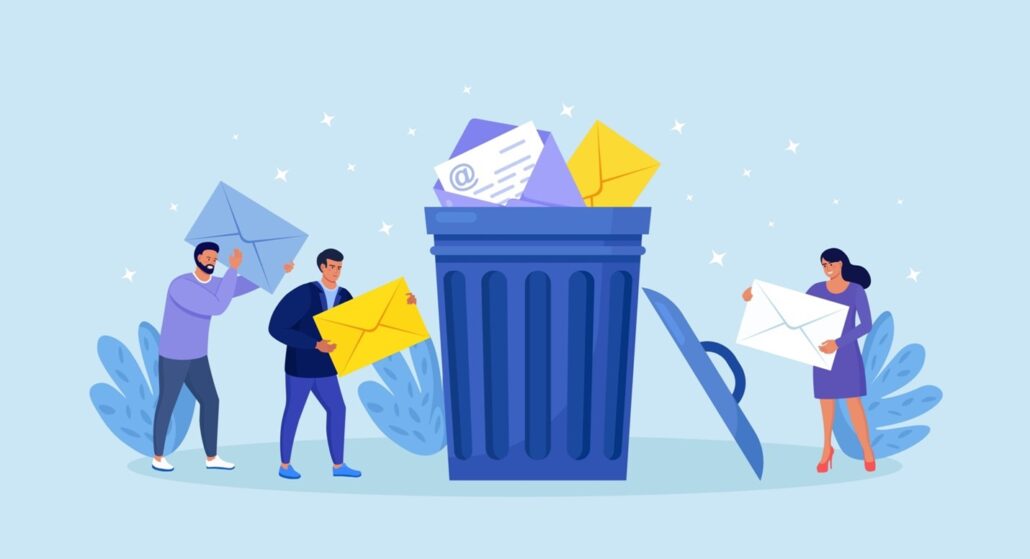Hold onto your legal briefs, tech fam, because we’re diving deep into the rabbit hole of metadata in eDiscovery. You’ve heard the buzz, but what is it and why is it the digital detective’s secret weapon?
If you thought eDiscovery was just about sifting through documents and emails, you’ve been sleeping on legal professional’s secret weapon—metadata.
What is Metadata Anyway?
Picture this—you’re maxed out in your comfy chair, third cup of coffee in hand, laptop glowing. A wild file named “SoBoring.docx” catches your eye. You’re about to snooze but wait… its metadata reads like a tabloid headline—dates, authors, and edits that flip the script.
Welcome to the party, y’all. Metadata is data about data, the hidden nuggets of info that let you unravel the story behind every file. It’s the digital fingerprint etched into every piece of electronically stored information (ESI). Metadata gives you backstage access to the context and backstory, offering key clues that can make or break your case.

The Metadata Mixtape: Types & Why You Care
Metadata is like your playlist’s playlist, offering you “tracks” of data you didn’t know you needed. From document creation to modification history, these tracks set the tempo for your case. Some key types of metadata include:
- Application Metadata: This is where the beat drops, fam. It tells you who hit ‘play,’ when, and what tweaks they made. Every electronic document has its own secret history, and this is your time machine to it.
- File System Metadata: The VIP bouncer of your data party. This metadata watches your file’s every move, from creation date to last modification. File metadata highlights file format and changes made to an electronic file.
- User Metadata: You add this to the groove—your comments, tags, even your sassy little ‘this is urgent’ labels. It’s your autograph on the digital canvas.

Metadata in eDiscovery: The Game Changer
Now, here’s the plot twist you’ve been waiting for—how metadata shakes things up in electronic Discovery. Ever had a case where you needed to know exactly when a document was created or last edited? Metadata. Need to establish a timeline of events based on emails, contracts, or Slack messages? Again, metadata.
Use of Metadata helps us identify, collect, and validate ESI (Electronically Stored Information), giving it context and making it searchable. With powerful eDiscovery software, you can sift through mountains of electronic data in a snap. It’s your secret weapon in a complex litigation landscape. This isn’t just for hard-nosed investigators. It’s for the savvy paralegals, the corporate attorneys, and, yes, even the newbies in legal tech.
- Date Stamps & Authorship: This is your secret sauce for credibility. Metadata allows you to establish a concrete timeline, helping to prove or disprove allegations.
- Redaction & Production: When you’re in the eDiscovery phase, redacting sensitive info is crucial. Metadata helps ensure you’re not oversharing.
- Keyword Searches: The simple days of CTRL+F are gone. Advanced search options driven by metadata can dig up the proverbial bodies, even when they’re hidden behind innocent-looking synonyms or abbreviations.
- Compliance: For those tangled in the web of GDPR, CCPA, or any other four-letter compliance nightmare, metadata can be your lifeline, proving you’ve handled data in line with regulations.

Email & Text Messages
The metadata for emails and text messages? Priceless. We’re talking about sender, receiver, date, time, and even location data. Yup, the digital breadcrumbs that can make or break a case are often found in the mundane metadata of everyday communications.
Text Metadata: Includes sender-receiver info, timestamps, and even device details. Text messages come with a variety of metadata. Some examples include:
- Sender and Receiver Info: The digital “call me maybe.” Yep, we’re talking about who made the first move and pinged whom.
- Date and Time: Essentially the RSVP for your data party. When did the virtual soirée kick-off, and did everyone arrive fashionably late?
- Message Status: Think of it as your personal reality TV show recap. Was the message read, blatantly ignored, or is it anxiously awaiting its fate?
- Device Information: The red-carpet question: “Who are you wearing?” Is it an iPhone, Android, or some relic from the tech Stone Age?
- Location Data: Playing detective? This is your clue. If location services were on, you’ll know if that “Out of Office” was really code for “Beach Day.”
- Length of Message: Are we talking a quick hello or War and Peace? This bit reveals just how verbose or tight-lipped the message is.
- Message Identifier: Your digital fingerprint or, if you prefer, the social security number for each and every message you send.
- Group Message Details: Ah, the digital ensemble cast. Who’s in the VIP section of your group chat, and what’s the name of this exclusive club?

Email Metadata: Runs the gamut from sender and receiver IDs to subject lines, timestamps, and attachments. Emails also come with a wealth of metadata. Some examples include:
- From, To, CC, BCC: The who’s who of the email social circle. Who started the gossip, who’s in the inner circle, and who’s eavesdropping without anyone knowing?
- Subject Line: Ah, the elevator pitch of emails. How tantalizing did the sender make it? Clickbait or the real deal?
- Date and Time: The timeline of your virtual tête-à-tête. Did this conversation happen during office hours, or is someone burning the midnight oil?
- Message-ID: The backstage pass or VIP ticket that gives each email its unique street cred.
- In-Reply-To and References: This is the email family tree, showing who replied to what, and which messages are basically cousins, twice removed.
- Email Size: Is this a lightweight banter or a heavy-duty manual? Size can include the kitchen sink or just a soap dish.
- Attachments: The gift bags of the email world. What swag did you get? A PDF, a funny meme, or a Trojan Horse?
- Content Type: Are we talking sleek magazine layout or a DIY zine? HTML jazziness or plain text simplicity?
- Read Receipt Request: Basically asking, “Did you ghost me, or are we good?” A clingy but sometimes necessary feature.
- IP Addresses: The breadcrumb trail Hansel and Gretel wish they had. Traces the email’s epic journey across the World Wide Web.
- Server and Client Information: The relay race of data. Which servers did the email high-five on its way to you?
- Mail User Agent: The email’s mode of transport. Was it sent first-class via Outlook or backpacking through the Gmail interface?
Don’t sleep on email and text message metadata either, folks! Legal teams pay attention because emails and texts are hotspots of metadata magic. You get the basics like sender, receiver, and date, but there are hidden gems like unique message IDs, file attachments, and even read receipt requests. It’s all about layering extra dimensions of understanding onto those communication channels.
But Wait, There’s More
Not all metadata is created equal, and specialized types like geolocation, EXIF data for images, and embedded metadata fields can provide extra layers of context or even become the focus of a case. For instance, the version history can show who made what changes, when, and where—a veritable treasure trove for legal teams.
And, oh boy, we’re not done! There’s more:
- Geolocation Data: Some files, especially mobile captures, could reveal where a file was created or modified.
- EXIF Data: Image files can contain data about the camera settings, adding yet another layer of context.
- Version History: In today’s collaborative workspaces, files often have multiple versions. Metadata can track every change, providing a chronological narrative of a document’s life.
Metadata is more than just a one-hit wonder; it’s an album full of tracks you never knew you needed but can’t live without. Each file in your eDiscovery universe is a goldmine of details, adding nuance to your cases and projects. So, the next time you’re grooving with your data, remember to tune into its metadata. Trust me; it’s the life of the data party!

Getting Meta
Listen up, people. Metadata is more than a tech buzzword; it’s a fundamental part of modern legal practice. From the basic—like who drafted a document—to the complex, like tracking the intricate history of a legal contract, metadata should be part of your legal tech toolkit. Metadata gives you a digital footprint of an electronic document or rogue pieces of ESI.
Metadata isn’t just for nerds; it’s for anyone who wants to be a powerhouse in the eDiscovery game. Next time you find yourself diving into a sea of electronic data, remember metadata is your lifeboat.


